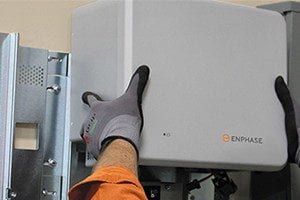New South Wales consumers who have invested in “smart energy” technologies like rooftop solar and battery storage could soon form part of a 200MW-plus virtual power plant, after the launch of a new grid-bolstering scheme by the Coalition state government.
The Berejiklian government says the 40,000 household and business participants can earn up to up to $1000 a year to support energy security in the state – using the same technology they have installed to slash their power bills.
Energy minister Don Harwin says the $50 million Smart Energy for Homes and Businesses program, set to launch early next year, would financially reward customers for feeding their excess energy into the grid at times of peak demand, such as during summer heatwaves.
The VPP, also described as a “demand response” scheme will be delivered in partnership with “leading energy companies,” Harwin says. Expressions of Interest opening to industry on Wednesday.
NSW has faced some critical moments in recent summers, when heat-waves have tested the resilience of the grid, particularly with major coal and gas generators tripping due to heat issues.
Harnessing the power of demand-side energy resources has been a key focus of the Australian Energy Market Operator over the past few years, although AEMO’s work so far in the area have mainly centred around commercial and industrial partners.
The NSW VPP may be the biggest in Australia, considering the uncertainty over the proposed Tesla 250MW virtual power plant in South Australia (funding has only been secured for a 5MW first stage), and because the South Australian government’s new battery program does not require customers to participate in any VPP.
The NSW program is designed to unlock the benefits of both solar and storage, as well as moderating the use of air conditioning and other household appliances – providing a payment to relieve pressure on demand at those times of critical peaks,
“Smart technologies will play a critical role in maximising the potential of our energy system – allowing us to access and coordinate stored energy for when and where we need it most,” Harwin says.
“By simply contributing to the grid just five days a year, more than 40,000 consumers across NSW will receive up to $1000.
“Over four years, this smart energy scheme is expected to generate up to 200MW of new dispatchable energy during peak energy events.”
As we reported here, a recent trial conducted alongside the Australian Renewable Energy Agency and various state governments aggregated a total of 146MW of demand response capacity over the 2016/17 summer, adding to AEMO’s pool of emergency back-up in case of a supply shortfall.
The findings from that trial, presented in a joint submission to the Australian Energy Markets Commission, highlighted the potential savings from demand response, particularly over the diesel generators traditionally tapped in times of short supply.
AEMO and ARENA said the establishment costs of demand response were one-fifth that of conventional diesel generators – coming in a $200,000 per megawatt of capacity, compared to $1 million/MW for a diesel generator.
For the New South Wales government, the push to establish its own demand-side resource is just the latest move in a flurry of policy activity geared at bringing the state’s grid into the age of renewables, and pushing down power prices for homes and businesses.
Just six months out from its own state election, the Berejiklian government also appears to be trying to make amends for presiding over the only state in Australia with no renewable energy target, not to mention the biggest remaining coal power fleet, and no plan to transition away from fossil fuels.
But that all changed a few weeks ago, with the launch of the Emerging Energy Plan, a comprehensive roadmap to support the commercialisation of new large-scale projects in NSW that use emerging, dispatchable technology.
That scheme is offering up to $10 million per project, for a total of $55 million – but as Giles Parkinson reported here, it is not the scale of the initiative that is significant, so much as the acceptance that the energy transition is profound, rapid and unstoppable.
“We are not seeking to accelerate the closure of coal-fired generators or delay their closure,” Harwin told RenewEconomy at the time. “The transition is happening, this helps prepare us.”
Since then, the NSW government has announced plans to buy up to 900 smart battery systems with a total of 13MW of capacity to install alongside rooftop solar on the state’s school’s and hospitals, which account for 45 per cent of public sector electricity demand in peak periods.
Harwin said his Coalition government was also accelerating the roll-out of rooftop solar throughout the state, through its target for government buildings to generate 25,000MWh of solar a year by 2021, and 55,000MWh a year by 2024.
And just yesterday, it launched a Transmission Infrastructure Strategy, aimed at increasing grid capacity in three key energy zones in the state’s central-west, south west and New England regions, the latter two the homes of the current and former heads of the National Party.
Wednesday’s announcement, meanwhile, is an attempt to bring the state’s behind-the-meter resources up to speed, too.
“Whilst only 5 to 10 per cent of our installed storage devices currently have this smart capability, this program is expected to drive new investment in the smart energy technology market,” Harwin said.
The Smart Energy for Homes and Business program is part of the more than $242 million in funding from the NSW Government’s Climate Change Fund focused on providing energy bill relief for households and businesses across NSW.










